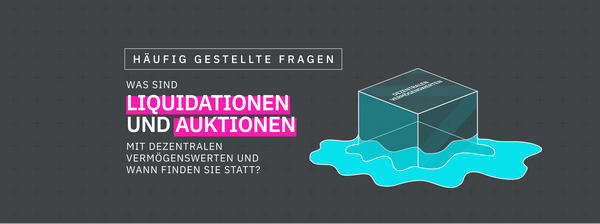DeFiChain Impermanent Loss risk explained
In the first two parts of this series around the DeFiChain DEX, we covered how and why DeFiChain is a 100% decentralized exchange (unlike most self-called "DEX'"), and how Liquidity Mining and the exchange function will work on the DeFiChain DEX.

The 3 main risks of the DeFiChain DEX (& any real DEX in general)
- Smart Contract Risk:
There is of course always the risk that there is some bug in the code of the Smart Contract that can be exploited. With DeFiChain, this risk is generally low (and much lower than with Ethereum), since the blockchain is non-turing-complete already and there are much fewer potential errors. - Project Risk
Are there any backdoors? Is the project independently audited? Is it open source? Of course, we at DeFiChain can 100% assure you that there aren't any backdoors or anything like that - and the Open Source Code & External Security Audits mean you don't just have to take us by our word.
3. The most important, biggest risk: Impermanent Loss
As the name suggests, this risk is only temporary.
This means that the more time you have, the lower the risk of an impermanent loss.
Furthermore, the more correlation the trading pairs (example: BTC-DFI) have in the liquidity pool, the lower the risk.
Why and how the Impermanent Loss works can be explained in a very simple example.
Let's assume that 1 Bitcoin has the current equivalent of 50,000 DFI.
And let's assume that the current liquidity pool size would be
9 BTC : 450,000 DFI (equivalent to 18 BTC in total).
If you now add 1 BTC and 50,000 DFI (in total equivalent to 2 BTC) to the liquidity pool, you contribute 10% of the liquidity and are entitled to 10% of the Liquidity Mining Rewards.
By now you should have understood the example without any problems - if not, please read the first two articles again, because there we explain liquidity mining in detail.
Continuing with the example:
Let's assume someone uses the DeFiChain DEX and buys 50,000 DFI with 1 BTC.
Now the pool looks like this: 11 BTC : 450,000 DFI
If you would like to withdraw your liquidity at this point, you can easily calculate this with your 10% share.
You would receive: 1.1 BTC + 45,000 DFI.
All in all still with the same value as at the beginning - exactly 2 Bitcoin.
This means that there is no loss here.
But what would happen if the DFI price suddenly doubled and 1 BTC was now only worth 25,000 DFI?
If you paid attention in the last two articles, you know that this is where arbitrators come in.
The current pool size is 11 BTC : 450,000 DFI.
But now there are 11 Bitcoin on one side and 45,000 DFI suddenly worth 18 Bitcoin on the other side. This is a big imbalance with a total value of 29 BTC.
The arbitrators balance this out again:
The pool would balance out to 14.5 BTC : 362,000 DFI, with a total of 29 BTC.
However, if you now pull out your liquidity, the percentage shift means that you no longer get back quite 3 Bitcoin equivalent.
You get 10% of the pool, that is 1.45 BTC and 36,200 DFI.
In total, a little bit less than 3 BTC.
So do I lose money if I practice Liquidity Mining?
No, of course it is not quite that simple.
As already mentioned: For such a significant impermanent loss, one of the trading pairs has to change a lot in price compared to the other trading pair.
And even in this case, you must not forget: You will still receive your Liquidity Mining Rewards.
This means that in the worst case you have to weigh the less return from a (potential) impermanent loss against the more return from the Liquidity Mining Rewards.
In most cases, the lucrative Liquidity Mining Rewards will clearly outweigh the Impermanent Loss, even if strong relative price fluctuations within the trading pairs might reduce these rewards a bit, if the crypto assets actually develop so independently of each other.
Where to go from here
To prepare for the upcoming DeFiChain Liquidity Mining and benefit from the extremely high returns, especially in the beginning, you should download the DeFiChain Wallet (also the DEX App).
And if you want to be the first to know when we go live (a lot earlier than you may expect!), you should definitely follow DeFiChain on Twitter and join the official telegram group where you can also ask and get all your questions answered.





